What animals are brave
16 of the Bravest Animals on Earth (Pictures)
From the depths of the oceans to the highest peaks, bravery and courage can be found everywhere in nature. Whether it’s a small act of defiance or a heart-wrenching display of courage, these creatures have more tenacity than we often give them credit for.
This article looks at 16 of the bravest animals in the world and examines their incredible acts of bravery that have gained them admiration from even the most hard-hearted observers.
From acts of self-sacrifice to fighting off predators, these animals prove that courage isn’t just found in humans. Read on to discover what makes these animals some of the bravest in the world.
1. Honey Badger
Honey Badger with a pup | image by Derek Keats via Flickr | CC BY 2.0Scientific Name: Mellivora capensis
Honey badgers are known for their notorious toughness and ferocity. Although small in size, honey badgers have been known to protect themselves against predators such as lions and leopards. They are also capable of killing venomous snakes, including cobras.
They will relentlessly fight back by using their powerful jaws and sharp claws while being protected by their thick skin and fur. Adding to the fact that they have to endure endless bee stings as they source for honey, one can see why the honey badger has earned its reputation as one of the bravest animals in the world.
2. Lions
Lion sits on the groundScientific Name: Panthera leo
The king of the jungle is undeniably a brave animal. Lions not only hunt their prey with skill and efficiency but also protect their pride against intruders and any potential danger.
They are known to fight against other predators, including hyenas and leopards. This unyielding courage displayed by the lions is one of the reasons why they remain at the top of the food chain in Africa’s savannas.
3. Wolverine
Wolverine sitting on a log | image by Mathias Appel via FlickrScientific Name: Gulo gulo
This small but ferocious member of the weasel family is one of the most courageous animals on earth. Despite its size, a wolverine is known to stand its ground even when facing potential danger from larger predators.
Despite its size, a wolverine is known to stand its ground even when facing potential danger from larger predators.
It will fight back with ferocity and aggression, using its powerful jaws and sharp claws to ward off attackers. This tenacious spirit and courage have earned the wolverine its place among the bravest animals in the world.
4. The Cape Buffalo
Cape buffaloScientific Name: Syncerus caffer
Commonly known as the “Black Death,” the Cape Buffalo is renowned for its fearless and unpredictable nature. This large and powerful herbivore which inhabits grasslands, wetlands, and floodplains, can weigh up to 1000 kg and stands incredibly low to the ground.
Its horns are curved upwards, forming a protective shield over its head, and no predator can take on an adult cape buffalo alone—it takes a troop of lions to bring one down. Crocodiles prefer attacking calves and younger bulls to adults, as they know the potential risk involved.
5. Black Mamba
Black mamba hissing | Image by Michael Kleinsasser from PixabayScientific Name: Dendroaspis polylepis
The black mamba is one of the most venomous snakes in the world and can reach lengths of up to 14 feet. However, it’s not just their size that makes them formidable; their agility, speed, and defensive posture are equally remarkable. In addition, they can strike repeatedly in rapid succession, so even if their initial attack is unsuccessful, they can easily try again.
Black mambas have been known to stand their ground against threats much larger than themselves and will fight back if cornered or alarmed. This brave snake’s reputation for attacking humans is well-known, and its presence is something to be feared and respected.
6. Tigers
A tiger roaringScientific Name: Panthera tigris
These powerful predators, known for their strength and agility, are also some of the bravest animals in the world. Tigers are not only capable of taking down large prey such as buffalos, deer, and wild boars; they will also defend their territory against rival tigers or any other animal that poses a threat.
Tigers are not only capable of taking down large prey such as buffalos, deer, and wild boars; they will also defend their territory against rival tigers or any other animal that poses a threat.
They will fiercely fight back, using their sharp claws and powerful jaws to ward off intruders. With its fearless attitude, the tiger remains one of the most formidable predators in the wild.
7. Ostriches
Group of ostrich under white skyScientific Name: Struthio camelus
Don’t let these flightless birds fool you; ostriches can be incredibly brave when threatened. Despite their inability to fly, these large birds can run at speeds of up to 43 mph and can kick with immense force.
They are known to fight back fiercely when cornered, using their powerful legs and sharp claws as weapons to fend off potential attackers. Their bravery is best observed when they protect their chicks, as they will ferociously attack anything that threatens their young.
8. African wild dogs
African Wild Dog | image by Bernard Dupont via Flickr | CC BY-SA 2.0Scientific Name: Lycaon pictus
Despite its small size, the African wild dog is a ferocious and fearless animal. This social predator hunts in packs and will take down even large prey species such as antelopes, buffalos, and zebras.
It has an incredible stamina that allows it to pursue its quarry for long distances, and its pack mentality gives it an advantage when taking on dangerous animals. This courage and single-mindedness have earned the African wild dog its place among the bravest animals in the world.
9. Bears
Brown bear in the forest | image by Frank Vassen via Flickr | CC BY 2.0Scientific Name: Ursidae
Bears are large, strong, and powerful mammals with a reputation for being fearless and aggressive when threatened. These animals can weigh up to 1,500 pounds and stand over nine feet tall. They possess a formidable set of claws and teeth, which they use to defend themselves against predators or intruders.
Bears are also known for their courage when protecting their young. They will fight off any animal that poses a threat, even if it means risking their own lives.
10. Rhinos
White Rhino | image by Digislides via Flickr | CC BY-SA 2.0Scientific Name: Rhinocerotidae
The rhino is one of the most intimidating animals in the world, and its size and strength make it an intimidating force. Despite its bulk, the rhino is surprisingly agile and can run at speeds of up to 34 mph. They have two horns located on their face.
The lower one is much longer than the upper one and serves as a formidable weapon against any attacker. They have been known to charge at predators and will fight back with their horns if they feel threatened.
11. Hippopotamus
Hippopotamus Herbert Bieser from PixabayScientific Name: Hippopotamus amphibius
Extremely large and powerful animals, hippopotamuses can weigh up to 9,920 lbs. These semi-aquatic mammals have the longest canine teeth of any living animal despite their herbivorous diet. Hippos do not use their long canines for eating; instead, they use them as a defensive weapon when threatened.
These semi-aquatic mammals have the longest canine teeth of any living animal despite their herbivorous diet. Hippos do not use their long canines for eating; instead, they use them as a defensive weapon when threatened.
The hippopotamus is much more aggressive than its appearance suggests, with males known to become very territorial and even attack boats and vehicles that enter their space.
12. Gray Wolf
Gray wolf in the woods | Image by Christel SAGNIEZ from PixabayScientific Name: Canis lupus
The gray wolf is one of the most courageous animals in the wild, capable of taking on large prey such as elk, deer, and bison. It is a nocturnal predator that hunts in packs and can cover large distances in search of food.
The gray wolf uses its sharp teeth and powerful jaws to fight back fearlessly when threatened. It is also known for its courage and loyalty to pack members, as it will fiercely protect its own against any danger.
13.
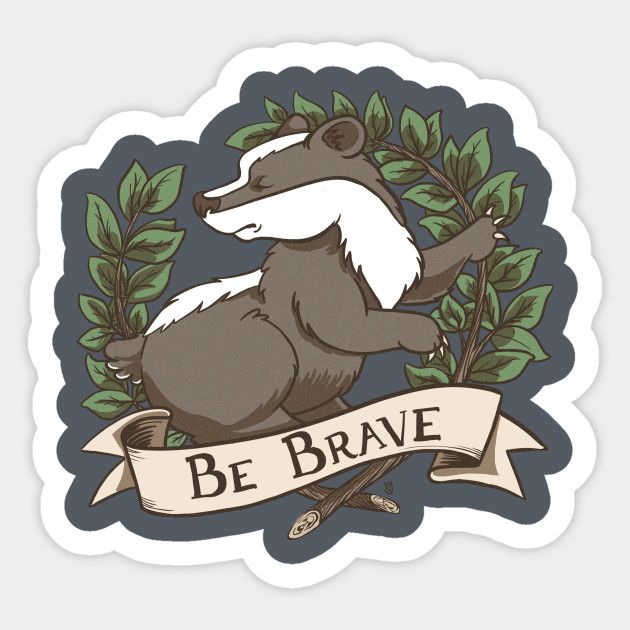 Komodo DragonKomodo Dragon on seashore | image by Adhi Rachdian via Flickr | CC BY 2.0
Komodo DragonKomodo Dragon on seashore | image by Adhi Rachdian via Flickr | CC BY 2.0Scientific Name: Varanus komodoensis
Komodo dragons are among the most fearless creatures, and it’s easy to understand why: they are the world’s biggest extant lizards, standing at 10 feet tall and weighing up to 70 kg. Their thick armored scales protect them from potential threats, and their formidable claws give them an edge when hunting for prey.
They have venomous bites due to the presence of many poisonous proteins and septic bacteria, meaning a single bite is enough to immobilize their victim.
14. African Elephant
African elephant walkingScientific Name: Loxodonta africana
While they may look peaceful, African elephants are surprisingly brave and courageous. They will protect their young with viciousness when threatened and can be quite dangerous if provoked.
They are also renowned for their intelligence and memory, which they use to navigate the savannas of Africa.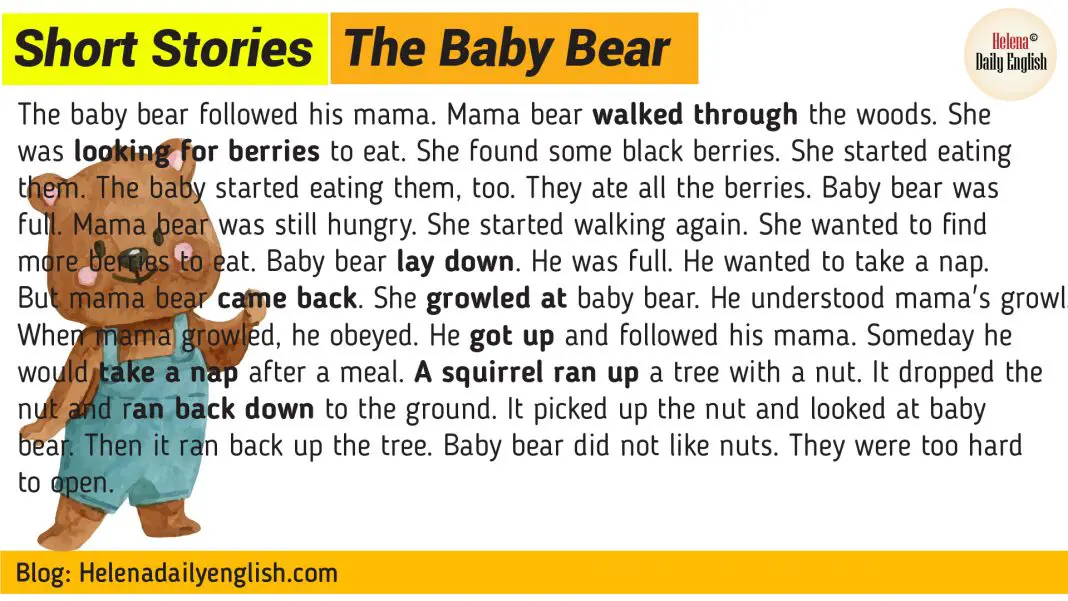 Their sheer size and power make them a formidable force to reckon with, and they have been known to fight off lions and other predators when defending their calves.
Their sheer size and power make them a formidable force to reckon with, and they have been known to fight off lions and other predators when defending their calves.
15. Wild Boar
Wild boar in the woodsScientific Name: Sus scrofa
The wild boar is an incredibly brave animal and can be very aggressive when protecting its young or feeling threatened. It has sharp tusks that it uses for rooting and defense, and it can use its powerful body to charge at any intruders.
Wild boars are also well known for their intelligence and are capable of outsmarting predators. They are fierce protectors of their territory and will fight to the death if necessary.
16. Moose
Moose | Image by David Mark from PixabayScientific Name: Alces alces
They may look easygoing, but moose are surprisingly brave. Although they don’t have any weapons of their own, they use their large frame and impressive antlers to defend themselves from predators. They are fiercely protective of their young and will do whatever it takes to keep them from harm.
They are fiercely protective of their young and will do whatever it takes to keep them from harm.
Moose will even charge at large animals, such as grizzly bears or wolves if they feel threatened. They are also surprisingly agile for their size, making them difficult to outrun.
Top 5 Bravest Animals in the World (A-Z List)
When it comes to the bravest animals in the world, most of us assume them to be lions. After all, they’re the king of the wild!
But, did you know that apart from lions, there are several fearless animals that don’t back down in a fight?
Animals like honey badgers, tigers, German shepherds, cape buffaloes, hippopotamus, and elephants are some of the bravest animals in the world.
Read on if you’re curious to learn more about these brave animals.
Table of Contents
Top 5 Bravest Animals In The World
Honey Badgers
Credit: Derek Keats CC BY-SA 2.0 via Wikimedia Commons (edited)Scientific Name: Mellivora capensis
Type of Animal: Mammal
Diet: Omnivore
Range: Africa and Asia
There is a reason why honey badgers are given the title of the “most fearless animal in the world” by the Guinness Book of Records.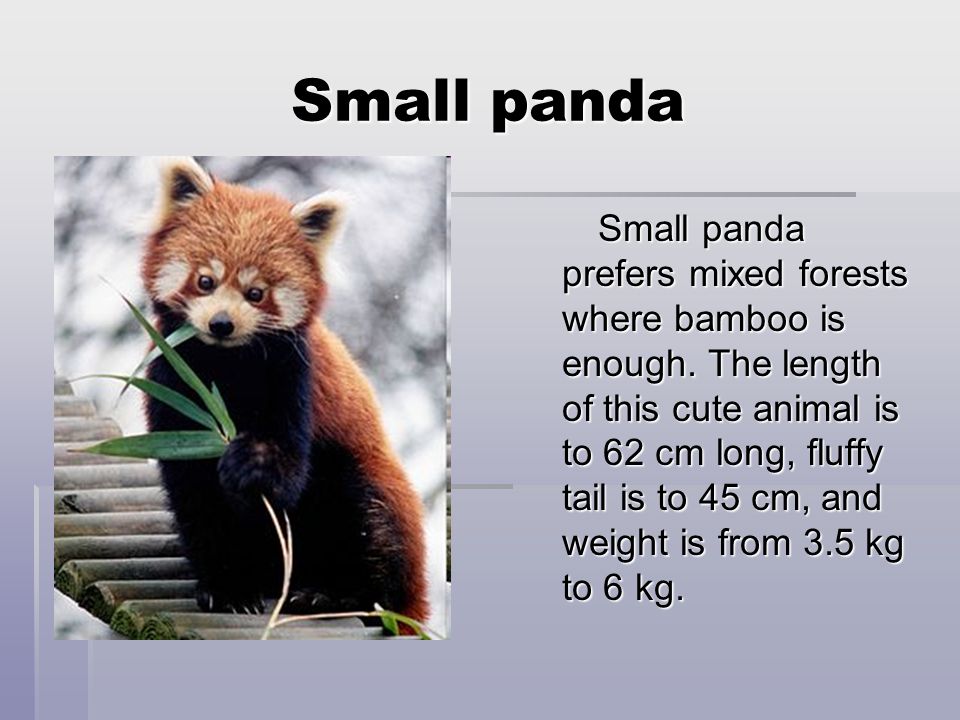 Honey badgers don’t back down from a fight despite their small size. In fact, there have been instances where these little mammals have fought off much larger animals, including leopards and lions!
Honey badgers don’t back down from a fight despite their small size. In fact, there have been instances where these little mammals have fought off much larger animals, including leopards and lions!
One main characteristic that allows honey badgers to defend themselves is their strong and thick skin.
A honey badger’s skin is around ¼ inches thick and is also impervious to sharp weapons such as arrows, spears, and machetes. Therefore, even a strong bite on a honey badger’s skin won’t cause much bleeding!
Additionally, honey badgers also have another advantage of having loose skin. This type of skin lets them squirm their body and escape from the predator’s mouth.
Apart from the skin, honey badgers also have sharp teeth and claws. Their teeth are so powerful that they can break a tortoise’s shell! This allows them to attack their opponents with enough confidence.
Honey badgers aren’t all about attacking, though. Sometimes, if they feel threatened, they defend themselves by releasing an off-putting odor to ward off the predators.
So, don’t judge a honey badger by its size, as it certainly won’t give up without a fight!
Related: Small Strong Animals
Tigers
Scientific Name: Panthera tigris
Type of Animal: Mammal
Diet: Carnivore
Range: Asia
Tigers are often seen as the symbol of courage and strength in various ancient cultures, like the Chinese culture.
Undoubtedly, a tiger’s bravery lies in its physical strength, sheer determination, and strategic planning.
These predatory animals can exert a force of 10,000 pounds just with their paws while fighting with any animal. This power is usually strong enough to kill the opponent or cause severe damage to their body.
Additionally, tigers also have the benefit of having longer back legs than hind legs. This gives them an edge over other animals as they can run faster and jump higher!
However, tigers aren’t just brave due to their physical strength. These felines have an extraordinarily determined and strong-willed nature.
These felines have an extraordinarily determined and strong-willed nature.
As a matter of fact, you’d even find idioms such as “eye of the tiger” that have come into existence due to a tiger’s fierce and courageous attitude.
Lastly, tigers are known to be strategic. If they don’t want to engage in a fight, they will easily camouflage themselves as a defense mechanism.
German Shepherds
Scientific Name: Canis lupus familiaris
Type of Animal: Mammal
Diet: Omnivore
Range: Worldwide
Most dogs are brave animals. However, German Shepherds stand out from the rest due to their high intelligence and strong nature.
Since time immemorial, these loyal animals have been used by humankind for purposes other than simply keeping them as house pets.
For instance, during the early days, farmers used German Shepherds to protect the flocks from any predators. Presently, they are used by several police forces to track criminals and sniff out any suspicious objects too.
Presently, they are used by several police forces to track criminals and sniff out any suspicious objects too.
Due to their muscular build and determined personality, German Shepherds are also used to rescue people during calamities, like floods!
In the wild, German Shepherds can fend for themselves for various reasons.
First, these dogs have sharp, pointy canines that can tear into their opponent’s skin. According to the American Animal Hospital Association, a German Shepherd’s bite is one of the most severe among other breeds.
Additionally, they are quick learners and can master many complex skills. Both physical and intellectual.
They’ve heightened senses, including an acute sense of smell that lets them sniff any danger from miles. This is one of the significant reasons why German Shepherds are used as guard dogs today.
Therefore, a robust build, strong-willed attitude, and sharp senses allow the German Shepherd to be one of the bravest animals in the world.
Read Also: Most Fearless Animals on the Planet
Cape Buffaloes
Scientific Name: Syncerus caffer
Type of Animal: Mammal
Diet: Herbivore
Range: Africa
Cape buffaloes are one of the bravest and deadliest animals in the world. These buffaloes are native to Southern and Eastern Africa and are commonly referred to as the “Black Death.”
Whether a hunter or an apex predator, cape buffaloes don’t back down. These animals have a track record of killing the maximum number of hunters in Africa compared to other animals.
Moreover, Cape buffaloes are also highly protective of their calves. If they feel like their calves are in grave danger, they will kill or injure the attacker by any means.
The strength of a Cape Buffalo lies in its speed, body, and sharp teeth. Did you know that a Cape buffalo can charge at its opponent at 35 mph? This is enough to make any animal run for its life!
Apart from the speed, Cape buffaloes also use their huge curved horns to attack or defend themselves. They won’t hesitate to cut open their enemies if they feel threatened.
They won’t hesitate to cut open their enemies if they feel threatened.
Here’s a surprising fact regarding the bravery of Cape Buffaloes. These animals can even take down a lion in a one-on-one fight.
Now, you can imagine how brave and powerful they must be to get into a fight with the king of the forest and even continue to win it!
Elephants
Scientific Name: Loxodonta
Type of Animal: Mammal
Diet: Herbivore
Range: Africa and Asia
You simply cannot forget elephants when the topic is about the bravest animals in the world. After all, humans always made use of elephants during wars due to their courage and strength!
Even today, elephants continue to remain brave in the wild. These animals use their strong tusks to defeat their opponents.
Also, most elephants weigh anywhere between 1,800 and 6,300 kg. Therefore, they won’t shy away from trampling and killing an animal that threatens them.
Apart from their physical strengths, elephants are also among the most intelligent animals. They’ve three times as many neurons as humans, allowing them to devise strategic methods to fend for themselves in the wild.
Unlike most animals, elephants believe in maintaining relations and protecting their kind with all of their strength.
For instance, if the male elephants sense any danger, they will circle the mothers and the calves to protect them. They will charge right back at the predators if there’s a need.
Did you know that there have been various instances where elephants have even succeeded in killing apex predators like tigers and lions with ease?
Such is the bravery and power of most elephants!
Bottom Line
Although many consider the lion the bravest animal, it is certainly not the only fearless one.
Some of the bravest animals worldwide include honey badgers, tigers, German Shepherds, Cape buffaloes, and elephants. Animals who won’t kneel in front of any living organism!
Animals who won’t kneel in front of any living organism!
These creatures have proved their bravery in the wild by developing excellent survival instincts, attacking and defending techniques, and tactfulness.
Thank you for reading. Hopefully, the article was interesting to read.
If you liked this post, here’s another popular read: Strongest Animal in The Jungle.
Honey badger. Description, photo and video. Habitat and lifestyle of honey badgers
The honey badger is an amazing animal that loves to eat honey. But don't let his name fool you. In fact, this is a ferocious predator that has received the title of "the most fearless animal in the world." He does not give in even to the most formidable predators of Africa - cobras and even lions. What is the secret of his strength? How does he fight back against the most aggressive and powerful animals in the world? We will answer these and some other questions in this article.
Content
- 1 Scientific classification
- 2 varieties
- 3 origin
- 4 distribution range
- 4.
 1 Geographical distribution
1 Geographical distribution - 4.2 Hailing
9000 5 5.3 Dimensions - 4.
- 7.1 Lair
- 7.2 Behavior and disposition
Scientific classification
- Kingdom: Animalia
- Type: Chordata
- Class: Mammalia (mammals)
- Order: Carnivora (predatory)
- Family: Mustelidae (mustels)
- Genus: Mellivora (honey badgers)
- Species: Mellivora capensis (honey badger)
The genus is monotypic. The generic name "Mellivora" comes from the Latin word "mel" meaning "honey" and "voro" meaning "to devour". The specific epithet "capensis" refers to the Cape of Good Hope, where Schreber in 1776 discovered the first specimen.
Other names: honey badger, bald badger, ratel. The common name "honey badger" comes from the animal's predilection for honey and wild bee larvae. When aggressive, it emits a rattling grunt, which is why the Dutch settlers in South Africa gave it the name "ratel". The Sindhi name for the honey badger is gorpat, which means gravedigger.
Varieties
In total 16 subspecies of honey are described, however, only 12 subspecies differing in size and color were recognized:
- Ethiopian Ratel (Mellivora Capensinica) - Ethiopia;
- Turkmen ratel (Mellivora capensis buechneri) – Turkmenistan;
- South African ratel (Mellivora capensis capensis) - South and South West Africa;
- Chadian ratel (Mellivora capensis concisa) - Lake Chad, Sahel, Sudan;
- black ratel (Mellivora capensis cottoni) - Ghana, Congo;
- Nepalese Ratel (Mellivora capensis inaurita) – Nepal;
- Indian warrior (Mellivora capensis indica) – from India to Turkmenistan;
- white-backed ratel (Mellivora capensis leuconota) - West Africa, Morocco, Congo;
- Kenyan ratel (Mellivora capensis maxwelli) – Kenya;
- Arab ratel (Mellivora capensis pumilio) - South Arabia, Yemen;
- speckled ratel (Mellivora capensis signata) - Sierra Leone;
- Persian ratel (Mellivora capensis wilsoni) - Iran, Iraq.

Origin
Honey badgers have probably lived in Africa since the late Miocene ( 12 million years ago ). The oldest fossils, dating back about 10 million years, are found in Ngorora, Kenya. Most of the fossil remains date from the Pleistocene era.
Photo: Mauricio Anton
Milk badger teeth and grison permanent teeth are morphologically similar. They may have had a common ancestor who once inhabited Asia. During the Middle Miocene, the ratels moved from India through Arabia to Africa just before the opening of the fault in the Red Sea.
Distribution range
Geographic distribution
Most subspecies live on the African continent . Their range extends from the Cape of Good Hope in the south, in the north to Sudan, in the east to Ethiopia and Somalia, in the west to Niger and Morocco. Some varieties are also found outside the black continent: in Iran and the Arabian Peninsula, as well as from Turkmenistan and southwestern Kazakhstan to India and Nepal.
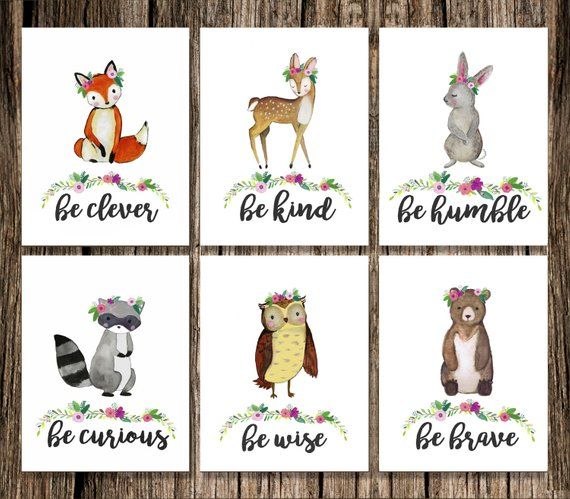
Photo: Wikipedia
In the Indian subcontinent, they are absent from the coast of Malabar, Bengal and Ceylon. In Africa, they are absent in the central part of the Sahara desert, on the Mediterranean coast and in the Nile Valley (Egypt).
- Biogeographic regions: Palaearctic, Ethiopian
Habitat
Honey badgers are found in a variety of habitats, including dense forests; subtropical dry evergreen forests; tropical thorn forests; open coastal forests; steppes; savannah; dry swamps; semi-deserts; on rocky hills and meadows. They are able to tolerate humid climates with rainfall >2000 mm per year and arid conditions with rainfall <100 mm per year. However, the sultry deserts are not suitable for them to live.
Photo: The Indian Express
Honey badgers are also known to be found at altitudes up to 2600 meters above sea level in the Grand Atlas Mountains (Morocco) and up to 4000 meters above sea level in the Abyssinian Highlands.

- Habitat: temperate, tropical
- Terrestrial biomes: semi-desert, savannah, grasslands, forest, scrub, mountains, coastal
Features
Appearance
Honey badgers have a long and relatively wide body. Its head is rather small; from above it is flattened and shaped like a badger's head. The skull is massive, with a broad base. The neck and shoulders are muscular. The tail is short, cylindrical and bushy.
Body covered with straight bristly hairs. The hair on the back of the thighs is long and can form tufts. The undercoat is usually sparse, 18-27 mm long. The inhabitants of the Himalayan mountains in winter have a thick undercoat with a hair length of about 40 mm.
Photo: Mpala Live!
The animal has small and deep-set eyes. Far-sighted vision , eyes reflect light at night. Ears inconspicuous; their cavities are surrounded above and behind by a thickening of the skin, which forms a hard ridge.
Probably, this natural adaptation is designed to protect against damage during battles with the enemy.
Another element of protection is tough, thick and flabby skin, which serves as a shield against the bites of other predators and allows honey badgers to deftly turn over to retaliate with an attacker. Skin is impervious to bee stings, snake fangs and dog teeth. Only the lower part of the body has thin skin.
The limbs are short but strong. Each foot has five toes with sharp claws. The front legs are shorter and wider than the hind legs; the average length of the nails is about 32 mm. When honey badgers dig, the front legs fit snugly together and form a wide and powerful shovel. The claws on the hind limbs are very short (about 15 mm) and do not reach ground level.
Paint
Photo: www.sanbi.org
The coat is black with a coarse mantle extending from the crown of the head to the base of the tail. The color of the mantle can be white, greyish, or gray-brown with black hairs thinly scattered down the middle of the back.
The tail has a gray or white tip.
As honey badgers age, the coat darkens and more black hairs appear on the back. But the head does not darken with age.
Average width of dorsal stripe in adults: 100 mm on head between ears; 90 mm on the neck; 150 mm at the shoulders; 220 mm in the middle of the back; 234 mm on the back. Honey badgers in African and Arabian countries have a pure white stripe about 25 mm wide separating the gray back from the black abdomen. The edge is white in front, but becomes more gray towards the tail. And the subspecies Mellivora capensis cottoni does not have a mark on the back at all.
Dimensions
This is the largest member of the mustelid family in Africa. Adults on average have a shoulder height of 23-28 cm and a body length of 55-77 cm (excluding tail). The tail grows up to 12-30 cm. Males weigh 9-16 kg, and females - 5-10 kg. Females are smaller than males in size and weight.
African subspecies are also superior to their Asian counterparts.
Diet
Like the wolverine, the honey badger is not particularly picky about food. This distinguishes him from other mustelids. The name was not given to him by chance - he loves honey and the larvae of honey bees (hymenoptera insects), so he spends most of his time looking for a hive.
Photo: Royal African Safaris
Overall, honey badgers are omnivores and feed on insects, spiders, amphibians, rodents, reptiles, scorpions, birds and mammals, as well as roots, bulbs, berries and fruits. Sometimes they eat eggs. The ratel can easily kill a large and dangerous snake, such as a cobra and even a black mamba.
Surplus food is usually hidden in the den. Honey badgers living near people are often accused of ruining poultry houses and apiaries. They love to feast on ostrich chicks, striders, meerkats, as well as domestic sheep and goats. In northern India, honey badgers have historically been accused of digging up dead bodies and eating carrion.
Honey badgers sometimes raid tourist tents and campsite dumpsters.
Honey badgers - good swimmers . Under water, they hunt turtles and amphibians. Fish are often caught with claws at the edge of streams.
Female honey badgers forage over a relatively small area, walking about 10 km a day. They zigzag over short distances from bush to bush, digging an average of 10 holes/km. Males forage over long distances, covering about 27 km per day and digging only about 1.3 holes/km.
Lifestyle
Mostly nocturnal activity, although there may be diurnal activity in undeveloped areas. Honey badgers live alone, in pairs, and sometimes gather in family groups of up to 10 individuals.
Due to their stocky shape, short legs with sharp and long claws, honey badgers cannot run fast. Their trot or gallop is comparable to the clumsy run of a bear. Usually the honey badger has a slow, rather bow-legged gait .

Lair
Honey badgers take shelter in self-dug holes, thick bushes, caves, fallen bamboo, hollow trees, old ruins or rock shelters. Although some species prefer ready-made burrows and choose abandoned termite mounds, dens of porcupines, yellow mongooses, aardvarks or big-eared foxes for shelter.
With strong, mole-like claws, the honey badger can dig an entire tunnel in hard soil in 10 minutes. A burrow usually consists of a single tunnel 1-3 meters long with a den at the end.
Behavior and disposition
Photo: Lion Mountain TV
By nature, the honey badger is close to the wolverine and the badger - it shows perseverance and endurance, but also extreme cruelty. It can attack almost any animal. The ratel is so brave that he attacks horses, cattle and even African buffalo. During the fight, he is fearless and furious; therefore, not many large predators are brave enough to hunt it.
Its bite is fierce and tenacious.
One honey badger fought a 3.5 meter python for about 15 minutes, eventually killing and eating it, while another fought for over 6 hours! They are less likely to show aggression towards their relatives, but at an unexpected meeting they continuously emit a wide range of grunts, hisses, squeaks and whines, rolling on the sand, sniffing each other and marking with a smell.
Reproduction
Mating occurs throughout the year. The gestation period lasts approximately 5-6 months. One or two cubs are born in the litter. They are born blind and hairless except for a few hairs on their muzzle. At the age of two days, the honey badger weighs about 250 grams, the length of the head and body is 20 cm, the length of the tail is 3.8 cm.
Eyes open at one month of age. Teeth begin to erupt on the 36th day and are fully formed after 3-3.5 months. At the same time, the fur of the cubs acquires an adult color with a clearly defined white-gray dividing line.

Photo: Wikimedia Commons
During the first weeks, the calf makes squeaky and low guttural sounds, usually while feeding. The vocalization changes to a deep, drawn-out, ominous growl at 10 weeks of age. Attempts to walk progress from swimming using all four legs at 2-3 weeks of age, to moving forward with the front legs at 5 weeks of age, and finally to a canter at 8 weeks of age.
- Mating system: polygynous
- Breeding interval: once every 14-24 months
- Breeding season: all year round
- Number of offspring: 1-2 cubs
- Weaning: 2-3 months
- Age of sexual or reproductive maturity: 1-1.5 years (females), 2-3 years (males)
Interactions with humans
Honey badgers often prey on poultry and due to their stubbornness and aggressiveness it is impossible to prevent such situations.
A strong chicken coop will not help either. This predatory animal is capable of destroying even thick wooden boards.
Photo: AZ Animals
A big dog won't help either, because the warrior has thick skin and a strong body, so killing him is a real problem. Thick skin can even withstand a blow from a machete; so the most effective way to kill a honey badger is to headbutt it.
Conservation status
Honey badgers are rare throughout their range. Persecution by beekeepers and livestock breeders and susceptibility to disease in cats and dogs are reasons for the decline in their populations. In South Africa, non-selective trapping has resulted in the honey badger being placed on the Red List of Vulnerable Species.
Did you know?
- Like mongooses and hyenas, honey badgers have an anal sac that secretes mucus with a suffocating odor.
It is likely that this mucus calms the bees during the extraction of honey. As a means of defense, the ratel also often "shoots" unpleasant mucus towards the aggressor.
- In captivity, honey badgers are easily tamed and become funny pets.
- On several occasions, scientists have observed honey badgers making and using tools like a chimpanzee. This indicates a high level of intelligence of these animals.
- Cheetah cubs and adult honey badgers have a similar coat color on top, so most predators leave cheetah kittens alone, mistaking them for an aggressive honey badger.
- The honey badger is resistant to the venom of many snakes. After being bitten by a noisy viper, the animal suffers from severe pain, but after about 5 hours, the state of health improves.
- In Kenya, the honey badger is the main vector of rabies.
- Adults consumed an average of 0.9-1.3 kg of food per day.
- The honey badger is listed in the Guinness Book of Records as "the most fearless animal in the world.
"
- The indigenous people of Somalia firmly believe that when a honey badger bites a person, the latter loses his fertility.
- It's hard to say how long honey badgers live. Based on observations in captivity, it has been estimated that they can live to 26 years , but nothing is known about their lifespan in the wild.
Top 20 animals in the world. The most subjective top "Medusa" In the first place - not cats! — Meduza
Photo: mauritius images GmbH / Alamy / Vida Press
Cute animals such as cats, dogs, quokkas, wombats, pandas and many others are constantly appearing in the Big Top section. It's time to decide which one is better. Meduza made the most subjective top 20 cute animals, and even took the risk of not putting cats on the first line.
20. Battleship
Let's start with the bitter truth: armadillos are very scary. They look like huge hairy centipedes.
But under the harsh armor hides a playful creature that loves to splash in the water and wag its ears in a funny way.

Cute Armadillo Taking A Bath!
CuteThings
19. Alpaca
Alpaca looks like a sheep, only with a long neck and funny hair. They have very soft fur, so they are the best cuddle creatures.
Cute alpaca eats cherry and spits out pip
voodooalpaca
Adults have a completely round, completely white and very fluffy head - most of all they look like anime creatures from Miyazaki's films. In flight, long-tailed tits resemble flying lollipops.
And of course, these birds are funny called ladles! They also move very fast, so it is better to admire them in static mode.

Photo: Arco Images GmbH / Alamy / Vida Press
17. Giant panda
It would be a crime not to include pandas in the top 20. Pandas are beautiful and they don't go extinct anymore.
Toronto Zoo Giant Panda vs. Snowman
Toronto Zoo
16. Wombat
Wombats look very awkward, but they are actually big gamers. And they also have a very dense back part of the body - they fight off the attackers with it.
Happiest wombat ever goes crazy if you stop petting her
Buzz60
15. Fennec
Fennec is a miniature fox with big ears. Fenechs run fast, pressing their ears to the body, and squeak funny.

Fennecs are absolutely crazy
thedizzyedge
14. Guinea pig
Some Indians who lived in Peru worshiped guinea pigs. Indians are easy to understand: you can watch small rodents eat all day long and still not get bored.
Om Nom Nom — Cute Guinea Pigs Eating
Cuteness Overload
13. Meerkat
Meerkats are not stupid creatures (unlike the same guinea pigs), but Drongo birds manage to deceive them. However, this is by no means a reason not to love meerkats.
Drongo Bird Tricks Meerkats - Africa - BBC
BBC Earth
12.
Quokkas
Quokkas are "the happiest creatures on Earth": their faces are arranged so that they seem to be always smiling. Quokkas are curious and friendly but are only found on a few islands in Australia.
Quimby, the Curious Little Quokka
Sara Kate Raymond
11. Flying Fox
To be honest, we know very little about flying foxes. Despite the repulsive appearance (after all, it is a distant relative of bats), foxes squeak contentedly when they are stroked. This alone is enough to consider them extremely cute.
Juvenile bat squeaks while being petted.
Megabattie
10. Sloth
Sloths are amazing creatures.
If you look closely, you can see that they do not look cute at all (compare with kittens - no resemblance). However, they somehow manage to get us to treat them with warmth.
Cute Baby Sloths Learn To Climb
Barcroft TV
9. Ring-tailed Lemur
Lemurs have striped tails and, despite being nocturnal animals, love the warmth of the sun. They also learned how to use people for their own benefit (at least these two boys).
Kids Pet and Communicate with Lemur
DailyPicksandFlicks
Jumper!
Round eared sengi eat a worm — Video in HD
MKROXTON
7.
Koala
Have you noticed that koalas have two thumbs? Ah-ah-ah-ah!
Koala joey runs over for belly tickles and cuddles
Symbio Wildlife Park
Because the red pandas have a long fluffy tail, and the caretaker in the zoo can, without fear for his life and health, play with three of them at once.
Red Pandas are obsessed with apple〜リンゴに夢中のレッサーパンダ
Mmovies21
0209
Sea otters are graceful both in water and on land. They swim, moving the cubs on themselves, and hold onto each other's paws.
Sea Otters Milo and Tanu Holding Paws
Vancouver Aquarium
4.
Cat
Animals that were able to conquer half of humanity with their selfishness: "Open the door, I don't know why." Selfish and fearless. You already know everything about them.
FEARLESS CATS 😹 23 Badass Cats Who Will Amaze You [Funny Pets]
Funny Pets
3. Dog
The fact that dogs are higher than cats in the ranking of the cutest animals is some kind of misunderstanding. Cats are cuter, of course.
But, unfortunately, we have not heard stories about a cat who lay down under a train just to support his injured friend. Heard about dogs.
NEW VIDEO: Saving Miley: a MUST SEE rescue + a video update ONE year later!!! Please share.
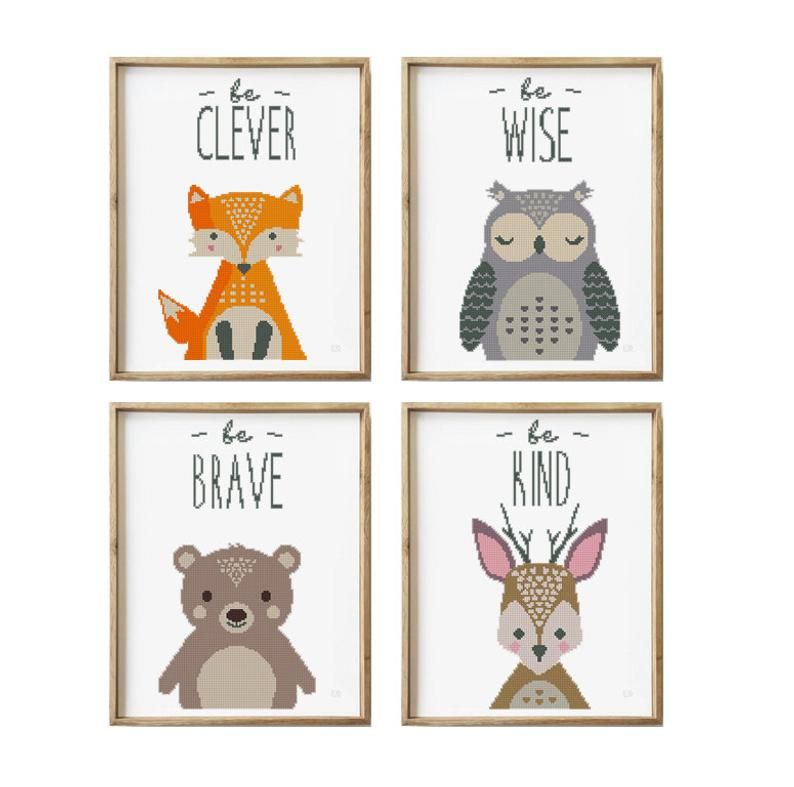
Hope For Paws - Official Rescue Channel
2. Capybara
Capybaras are the largest rodents on earth. Peaceful, phlegmatic animals that do not even care about being next to crocodiles. If you don't love capybaras, then you, apparently, are basically incapable of loving.
A Capybara Family's Day at Play | Deadly Game
Nat Geo WILD
1. Cheetah
When we promised non-cats to top the rankings, we were only half honest. Cheetahs are not only perfect predators, but also surprisingly affectionate animals.
This video shows cheetahs licking each other and scientist Dolph Walker, sleeping in his arms and purring very loudly.
Camping Inside A Cheetah Enclosure | Big Cats Snuggle Cuddle Purr Groom And Sleep With Friend
Dolph C.

Learn more











